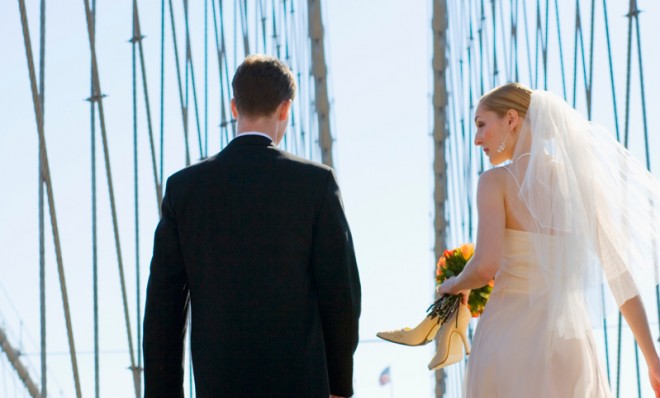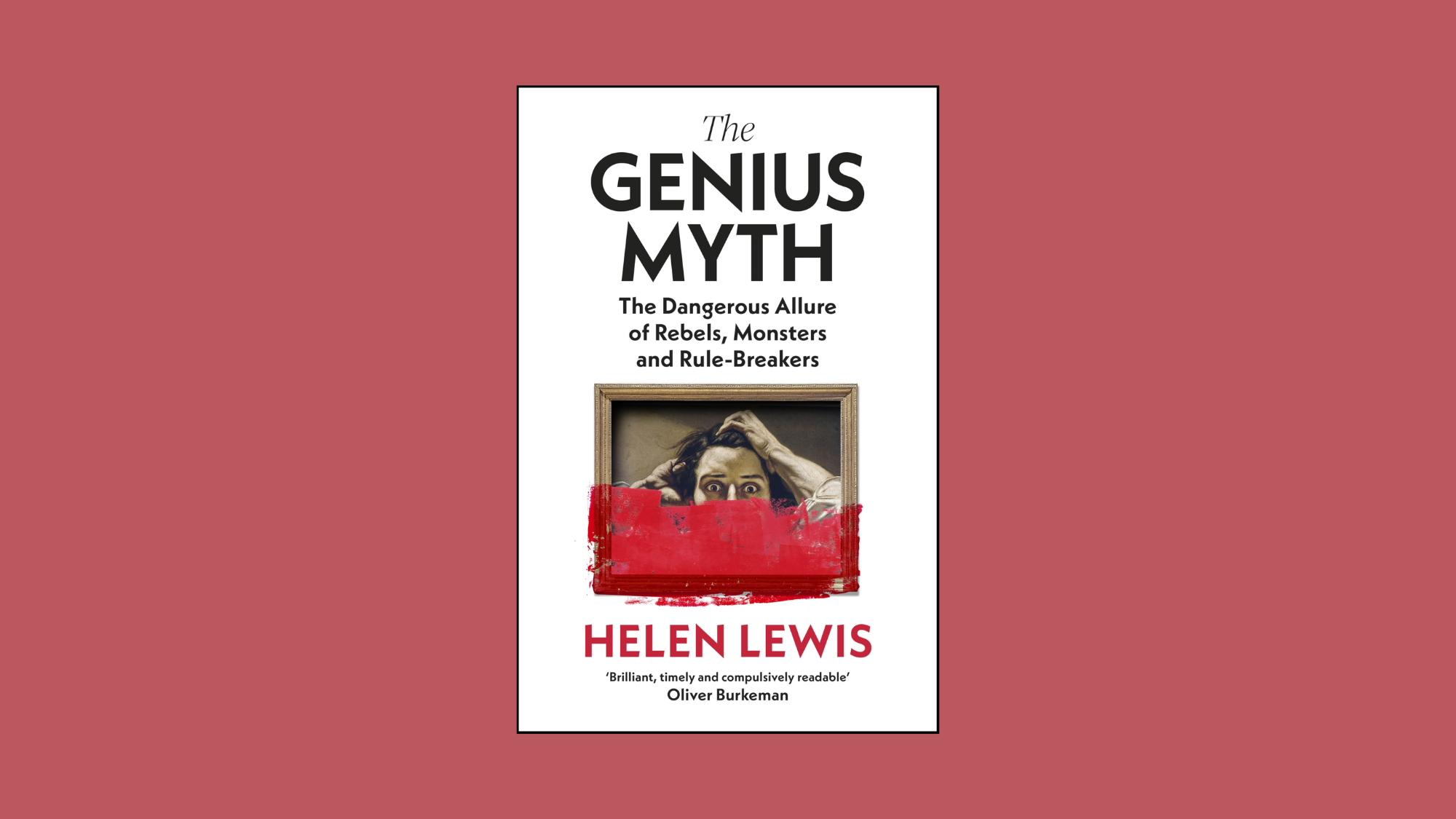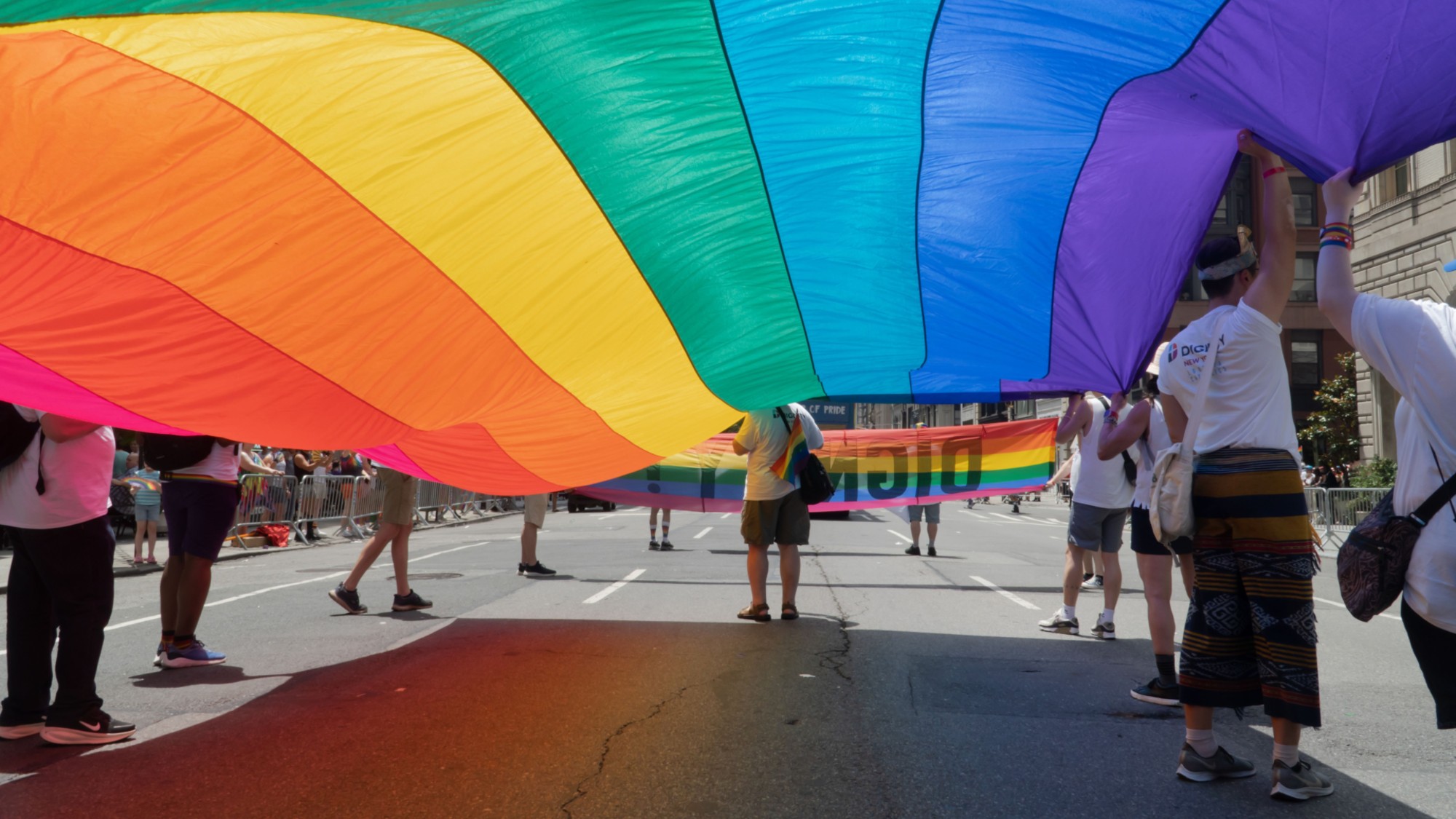The wedding industrial complex
Young couples are now spending fortunes on elaborate weddings, even if they're not rich. Why?

What do weddings cost today?
An astounding amount. Last year the average American wedding, including the requisite reception, cost $28,427. In affluent areas, the cost is even higher: In Boston, the average price of a wedding is $39,239; in Santa Barbara, Calif., it's $42,319; and in Manhattan, $76,687. In other words, many couples are spending on a single event lasting a few hours the equivalent of a year's tuition at college, or what the average American makes in an entire year. This nuptial extravagance is being driven by what some have called the "wedding industrial complex" — a $70 billion business sector comprising all the dressmakers, florists, reception halls, event planners, photographers, caterers, limo firms, DJs, bands, and jewelry designers that many people now consider necessary for a wedding that matches their dreams. Many young couples feel such pressure to keep up that they're staging ceremonies and receptions they really can't afford, says Rebecca Mead, author of One Perfect Day: The Selling of the American Wedding. "The whole culture of extravagant weddings encourages women to think that they have to do it, even though they're not going to be able to pay next month's rent — or even the DJ," Mead says.
How did we get to this point?
Subscribe to The Week
Escape your echo chamber. Get the facts behind the news, plus analysis from multiple perspectives.

Sign up for The Week's Free Newsletters
From our morning news briefing to a weekly Good News Newsletter, get the best of The Week delivered directly to your inbox.
From our morning news briefing to a weekly Good News Newsletter, get the best of The Week delivered directly to your inbox.
For people of means, weddings have always been an occasion for an extravagant display of wealth. But as far back as the 1920s, the rising American middle class sought to establish its status by imitating the high-society white wedding. Chicago retailer Marshall Field's published the first bridal registry in 1924, Brides magazine debuted in 1934, and after World War II, the boom in marriages kicked the wedding industry into high gear. But in the 1960s and '70s, many young couples steeped in countercultural disdain for displays of wealth and status chose simpler ceremonies. Then in 1981, the lavish wedding came roaring back. "Two words: Princess Diana," said Carol McD. Wallace, author of All Dressed in White: The Irresistible Rise of the American Wedding. The young ingenue's storybook wedding to Prince Charles, which featured a glass coach, a 25-foot bridal train, and an estimated 750 million television viewers, made such a global impression that millions of people began aspiring to their own fairy-tale weddings. Within a decade, said Wallace, "there was this arms-race quality to it."
Why is cost important?
Part of it is sheer imitation. Commoners want their own version of the glamorous events they see played out on TV, whether it's the 2011 royal wedding of Prince William and Kate Middleton or the reality-TV nuptials of Kim Kardashian (see below). "Americans want 'perfect' weddings, but they also want 'celebrity' weddings — where there is no budget and no limit to materializing our fantasies," said Middlebury College sociologist Laurie Essig. Some couples may also "invest" in lavish weddings as a sort of insurance against divorce. "There is a belief that if we're going to do this and we really mean it, we're going to show how much we mean it by going all out," said Mead. Wedding-linked businesses exploit this notion, and few prospective brides, grooms, and families dare to complain about cost. "You're made to feel guilty if you try to cut corners," said author Meghan O'Rourke, "as if to do so is to cheapen your love."
What about same-sex weddings?
A free daily email with the biggest news stories of the day – and the best features from TheWeek.com
Indications are that they're following the same path. Last year, same-sex couples spent more on average than traditional brides and grooms, despite a tendency to have fewer guests, according to a survey by wedding website TheKnot.com. Gay weddings are already a big business, with LGBT-specific wedding expos across the country. New York City Mayor Michael Bloomberg says that legalizing gay marriage "helped to create jobs and support our economy," generating an extra $259 million in spending within New York City in a single year.
Is the expensive wedding a global phenomenon?
It's becoming one. In the wealthy United Arab Emirates, the average nuptials cost $80,000 and can last as long as a week. China's $57 billion wedding industry is growing at an average annual rate of 7.8 percent, and India's is expanding by 25 percent a year. One trend among wealthier Indians is to fly the entire baraat — the wedding party of 300 to 400 guests — to exotic locales such as Singapore and Macau. Wherever it occurs, "it's easy to mock" such excess, said wedding planner and blogger Meg Keene. But the wedding industry succeeds, she said, because people everywhere share a common fantasy — to be "the star of the show for a day."
The ultimate in ostentation
The most expensive American wedding on record provided compelling evidence that a lavish ceremony is no guarantee of a lasting and happy marriage. The August 2011 nuptials between reality-TV queen Kim Kardashian and NBA star Kris Humphries cost an estimated $10 million. Everything from the Hollywood B-list guests (including ubiquitous TV host Ryan Seacrest and paparazzi favorite Lindsay Lohan) to the wedding party's couture (Vera Wang and Ermenegildo Zegna) was chosen and chronicled for maximum impact. Just 72 days after the wedding, Kardashian filed for divorce, and Humphries charged that he'd been duped into a "fraud" marriage designed to boost the ratings of his bride's TV show. The couple's divorce was finalized last week. But as ostentatious as it was, the Kardashian-Humphries wedding pales before several staged by mega-billionaires abroad. Indian steelmaking magnate Lakshmi Mittal shelled out an estimated $78 million for the 2004 wedding of his daughter, Vanisha, to investment banker Amit Bhatia. The 1,000 guests were flown to Paris and put up in first-class hotels for six days; the reception was held at the Palace of Versailles. The most expensive wedding on record was the 1981 marriage of Abu Dhabi's Sheik Mohammed bin Zayed Al Nahyan and Princess Salama, a seven-day affair that cost more than a $100 million. To accommodate all the invited guests, the sheik built a 20,000-seat stadium.
-
 4 tips to get a lower credit card APR
4 tips to get a lower credit card APRthe explainer Don't let your card's annual percentage rate balloon your balance
-
 The Genius Myth: a 'fresh and unpretentious' book from Helen Lewis
The Genius Myth: a 'fresh and unpretentious' book from Helen LewisThe Week Recommends This 'angry, witty book' by Helen Lewis is a valuable critique of the 'flattering fiction' of genius
-
 'We know these services are needed'
'We know these services are needed'Instant Opinion Opinion, comment and editorials of the day